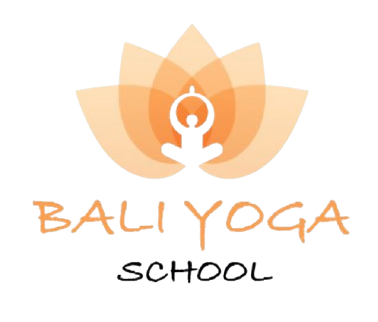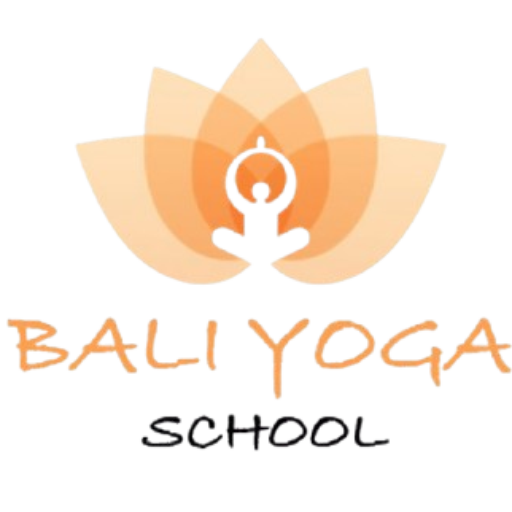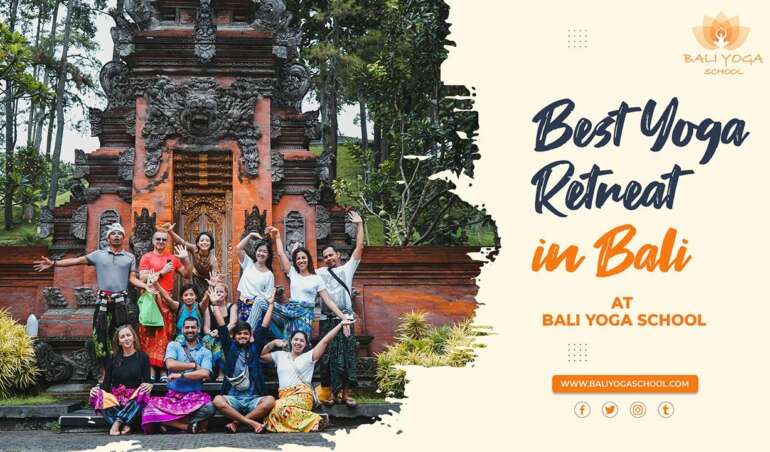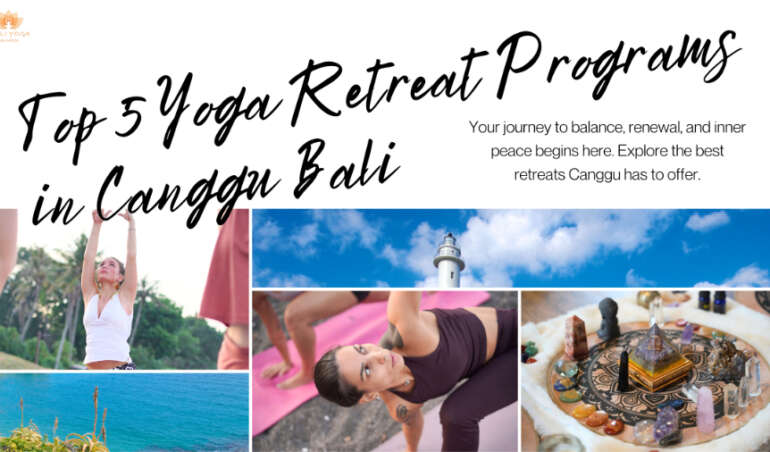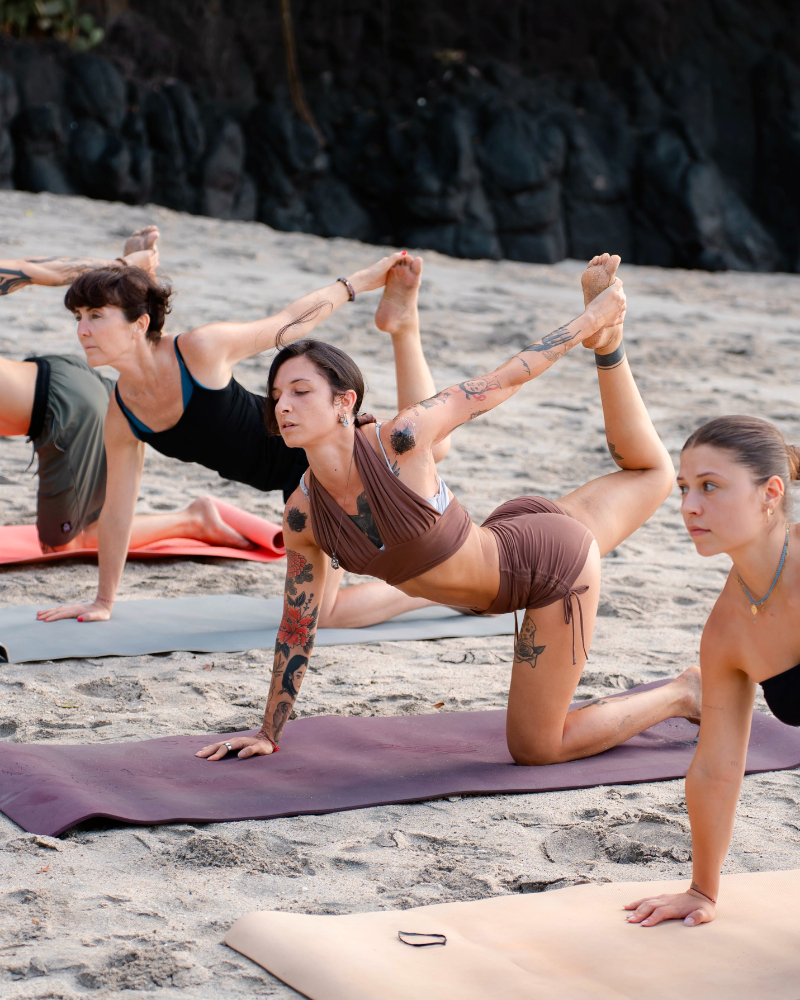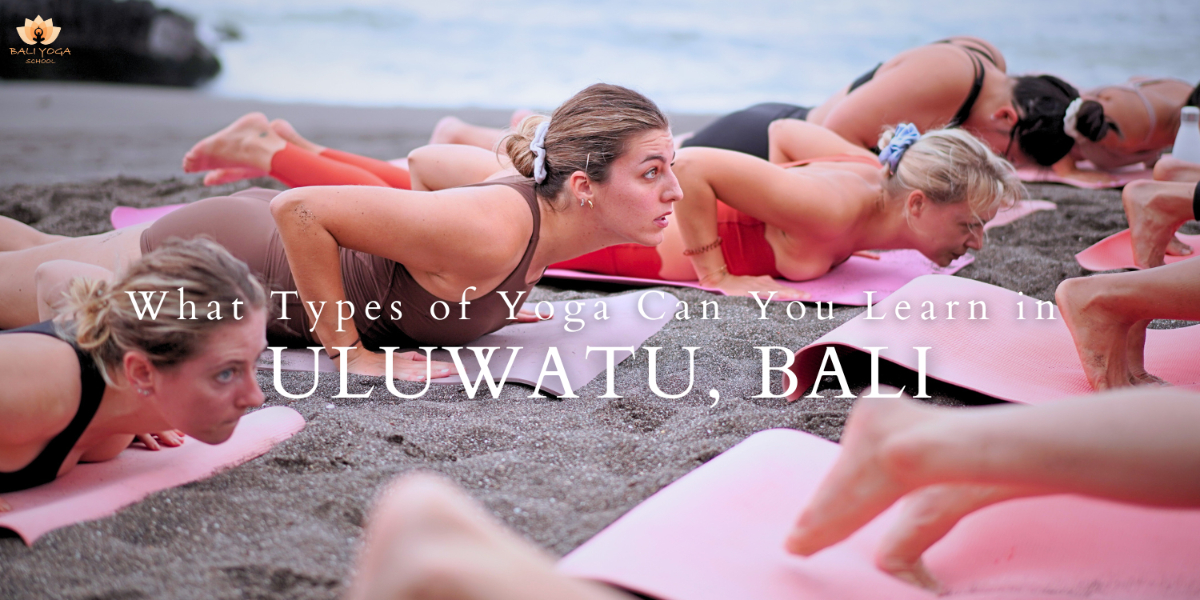
What Types of Yoga Can You Learn in Uluwatu Bali
Thinking about trying yoga but worried you’re not flexible enough? Or maybe you’re already a yogi looking for your next adventure? Either way, Uluwatu, Bali might just blow your mind.
This isn’t your typical gym yoga class. We are speaking of training on clifftops with the ocean in the background, and with instructors who really care about your path. The vibe is different, it is more relaxed, more natural, and much more inspiring than any other place you are likely to practice.
The beautiful views (which are pretty amazing) are not the only reason why Uluwatu is special. It is the amazing diversity of yoga styles offered, the friendly community that makes anyone feel at home, and the possibility to literally surf in the morning and do yin yoga and relax in the evening. No matter whether you are looking to push yourself to an athletic challenge or you are seeking to deeply relax after months of stress, this is the place to go.
Curious about what’s available? The following are the six yoga styles that are turning Uluwatu into the favorite yoga destination of yoga enthusiasts all over the world.
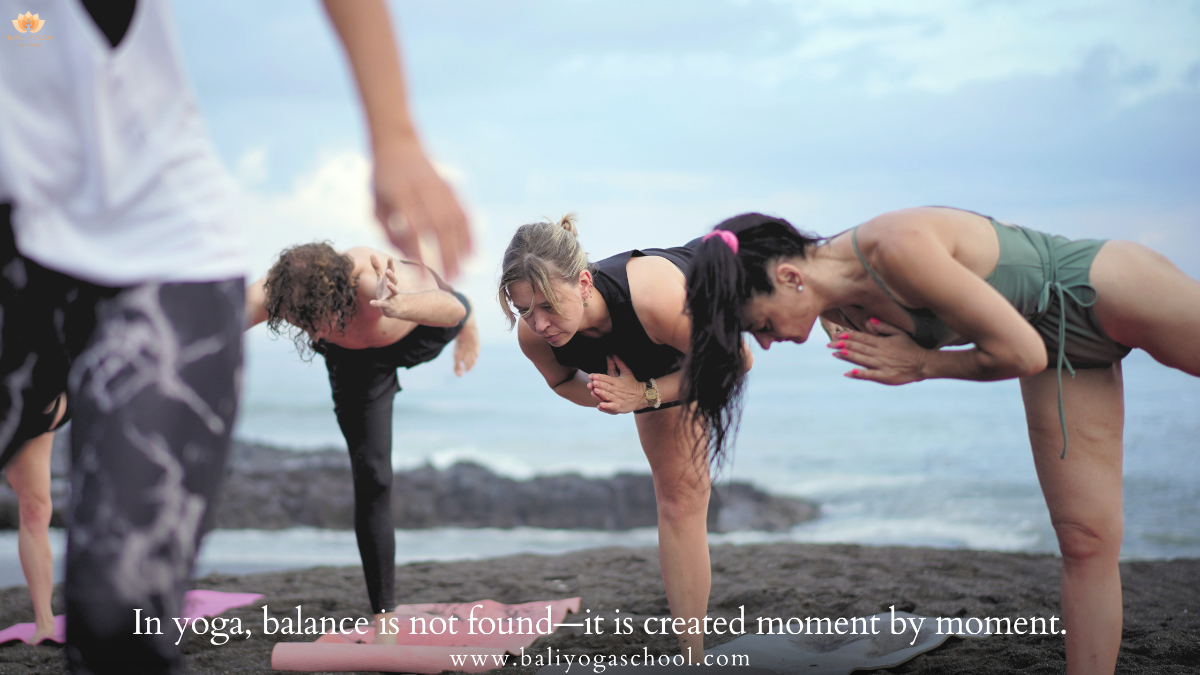 6 Amazing Yoga Styles Waiting for You in Uluwatu
6 Amazing Yoga Styles Waiting for You in Uluwatu
1. Hatha Yoga
Perfect for: Complete beginners, people recovering from injuries, or anyone who wants to slow down and reconnect.
Consider Hatha yoga as your soft entry into the world of yoga. Hatha is your new best friend in case you have ever felt intimidated by those pretzel-like poses you see on social media. It is like learning to walk than run, you concentrate on the fundamentals so that you establish a firm foundation.
During Hatha classes, you will be in each pose long enough to become familiar with the sensations of your body and how it moves. Your teacher will go around, correcting your posture and making you realize what each pose is meant to achieve in your body. It is not about being perfect but being present.
Benefits of Hatha Yoga:
- Improves flexibility and joint mobility through gentle, sustained stretches
- Builds foundational strength in core muscles and improves overall body stability
- It focus on slow, mindful movements, which reduces stress and anxiety
- Enhances body awareness and helps correct postural imbalances
- It helps calming overactive nervous system as well as promotes better sleep quality
- Perfectly helps in the recovery of several injuries
- The thing about doing Hatha in Uluwatu is so beautiful because the environment around you slows you down.
- After some sessions, you will discover that you’ve started breathing a little more deeper, your shoulders are not as tense up against your ears, and that voice in your head has started to ease down. It is like you are resetting your body and your mind.
2. Vinyasa Yoga
Perfect for: People who love variety, dancers, athletes, or anyone who gets bored easily with repetitive routines.
Where Hatha is a walk in the park, Vinyasa is dancing to your favorite tune. It is liquid, imaginative and never boring. Vinyasa is translated as to put in a special manner and that is what occurs, one movement flows into the next in line with your breathing.
What is great about Vinyasa is that the classes are never repeated. One day you might be drifting through sun salutations that make you feel like you are greeting the day and the next you might be finding heart opening sequences that make you feel lighter emotionally.
Benefits of Vinyasa Yoga:
Enhances cardiovascular health by flowing movements to get your heart pumping Develops functional strength through the involvement of several muscle groups in the coordinated movement Increases mental focus and concentration through breath and movement connection Dynamic stretching routines increase flexibility and range of motion Increases mood and energy with rhythmic, dance like movements Improves coordination and understanding of the body by using advanced flow patterns There are a lot of Vinyasa studios in Uluwatu with various intensities, which can be soothing and meditative like you are moving through meditation, or more challenging and you will definitely break a sweat. The most rewarding thing is that the teachers usually offer alternatives to each pose, thus, regardless of whether you are a beginner or can do a handstand in your sleep, you will find your ideal level of challenge.
3. Yin Yoga
Perfect for: Stressed-out minds, tight bodies, athletes needing recovery, or anyone who wants to learn the art of stillness.
Yin yoga is a desert oasis in our busy world. It might seem a bit weird to you at the beginning, at least when you are used to go-go-go everywhere: you will be staying in poses 3 to 5 minutes (and sometimes longer) and employing props (bolsters, blocks, etc.) to support your body and give gravity a chance to do its job.
Here is the thing though, those first few minutes can be a bit awkward as your brain will moan, “Why are we just standing here?” But then there is magic. You find yourself relaxing your nervous system, relaxing muscles you never realized your muscles were tensed.
Benefits of Yin Yoga:
- Makes you more flexible, addressing deep connective tissues, fascia, joints
- Increases flexibility by alleviating chronic pain and muscle tension with long held passive stretches
- It Relaxes the nervous system and can also decrease some stress hormones
- Enhances blood circulation which will further help in recovery
- Promotes awareness and educates on patience via stillness meditation
- Regulates the meridians of the body, which stimulates general health and energy
- Following a nice Yin practice in Uluwatu, it is not unusual to hear people saying that they have had an inside out massage. It is doubly fantastic when you have been surfing, hiking, or doing any other hardcore activities, your body will be grateful that it received this deep restorative work.
4. Ashtanga Yoga
Perfect for: Individuals who thrive on routine, goal-oriented individuals, athletes, or individuals interested in developing serious strength and flexibility.
Ashtanga is the marathon of yoga styles, tough, structured and very rewarding. In contrast to other styles, in which the order varies, in Ashtanga, the same order of poses is repeated. This may sound tedious but it is genius since you get to monitor your progress and be able to perfect every movement.
Ashtanga is practiced in two different ways: either in a so-called led class where the teacher leads you through the sequence as a group or in mysore style where you practice at your own rhythm with personal attention. Each has its advantages and the majority of the Uluwatu studios have both.
Ashtanga Yoga Benefits:
Develops outstanding physical strength, especially the core, arms, and legs Significantly increases flexibility and ROM with regular practice Trains the mind in discipline and concentration by using repetitive difficult patterns It Enhances endurance and cardiovascular capacity It uses heat producing poses and deep breathing to facilitate detox in the body Establishes a powerful mind-body connection by aligning and using breathwork You don’t have to be super strong or flexible when you start with Ashtanga- Ashtanga will meet you wherever you are. The beauty lies in the movement.
Perhaps you cannot bind in Marichyasana today, but you may surprise yourself in six months. The regularity and the encouraging vibrations of Uluwatu ensure the optimum growth conditions.
5. Kundalini Yoga
Perfect for: Spiritual seekers, people who are experiencing a life transitioning phase, or anyone who are just curious about meditation and breathwork.
Kundalini yoga is perhaps the most unusual style you will ever learn, and to tell you the truth, at first it may be a bit strange. You will repeat motions, certain breathing techniques, and recite mantra-s and this can feel like an eternity. But holding on to it can be profound.
Kundalini operates with what is known as your life force energy and the practices aim to help to move stagnant energy in your body. It doesn’t only work physically because people usually have emotional releases, mental clarity, or even spiritual insights during or after the class.
Kundalini Yoga Benefits:
- It promotes the working of nervous system and also assists in controlling stress and anxiety
- Helps increasing energy levels and vitality
- Enhances clarity and concentration using meditation and repetition of mantra
- Frees emotional blocks and psychological healing
- Boosts the immune system by decreasing stress and circulating energy
- Increases your spiritual connection and spiritual awareness to your inner wisdom and in case you are having a bad time in life, stressed out, or simply feel stagnant, Kundalini may be just what you need. With the help of Movement, breathing and sound techniques, you’ll be able to move what has been struck in your body, both on a physical and emotional level.
6. Aerial Yoga
Perfect for: People who want to try something fun and different, anyone working on core strength, those who want to safely explore inversions, or anyone with back issues.
Aerial yoga is like being a kid again, do you recall how much you enjoyed hanging upside down on monkey bars? That’s the fun of aerial yoga but now you are a big kid and you are doing it with the technique and alignment in mind.
With a silk hammock hanging from the ceiling, you can try poses that would be impossible or would hurt on the ground. The hammock supports the weight of your body so you can get into deeper stretches and attempt inversions without a worry.
Benefits of Aerial Yoga:
It relieves back pain by decompressing the spine and gently inverting and tractioning the spine Trains core strength and balances with unstable surface training Makes you more flexible in a safer way with the hammock to assist deeper stretches Enhances circulation and lymphatic drainage by inverted postures Decreases stress on the joints and enables access to difficult poses Increases playfulness and confidence and lessens fear of inversions
Surprisingly, aerial yoga is easy to start even when you are a beginner since the hammock offers support. You do not have to be super strong or flexible to get started as the silk does much of the work to you. And it is somehow freeing to be upside down and to look at the world in a new way.
Deciding to explore yoga in Uluwatu is not merely an opportunity to have a pleasant stretch, but rather a gift of transformation in one of the most beautiful places on the planet. Are you attracted to the grounding nature of Hatha, the fluid creativity of Vinyasa, the deep release of Yin, the discipline of Ashtanga, the spiritual awakening of Kundalini or the playful freedom of Aerial yoga? You will find your soul mate here.
Uluwatu is magical, no doubt it’s absolutely stunning, but not just because of its natural beauty, but, rather also because of its deep and inspirational environment, which adds depth and vitality to your yoga practice. A combination of deep breathing, stretching in an open sky(plus with the sound of the ocean in the back) and the presence of like-minded people all over the world makes even basic poses feel authentic and inspirational.
So, pack your yoga stuff, and be prepared to explore a life changing journey, that you’ll never forget in your entire life. Your change is about to begin, and your yoga mat is waiting for you. See you in Uluwatu!
FAQ
Q. Which styles of yoga are most commonly taught in Uluwatu Bali?
ANS. The most common styles that you will come across include Hatha, Vinyasa, Yin, Ashtanga, Kundalini, and Aerial Yoga. There are various types of studios which offer a wide array of customizations, so you can easily experiment with different styles to find the perfect fit for you.
Q. Do they have yoga classes in Uluwatu Bali that are friendly to beginners?
ANS. Absolutely! Most studios have classes that are specifically for beginners and most general classes offer modifications to accommodate various levels. Hatha and gentle Vinyasa are especially newcomer-friendly and instructors tend to be very accommodating to newcomers.
Q. Are there advanced or special styles of yoga in Uluwatu Bali?
ANS. Yes, absolutely. There are a lot of advanced Ashtanga, power Vinyasa, special workshops, and teacher training programs. Every year thousands of dedicated practitioners from across the globe come to practice yoga in Uluwatu.
Q. Are there yoga schools in Uluwatu Bali that provide teachers training?
ANS. There are actually not many schools that provide Yoga Alliance-approved 200-hour and 300-hour teacher training courses in Uluwatu yet although as Uluwatu is getting popular among nomads, surfers, and yoga practitioners rapidly, world-leading yoga schools are considering to open schools there.
Q. Do yoga courses in Uluwatu, Bali have meditation and breathwork classes?
ANS. Yes, the majority of the yoga studios incorporate breathwork and meditation into their yoga classes, and many of them also have separate meditation and pranayama workshops. These practices are a perfect addition to physical yoga and they will enhance your experience as a whole.
